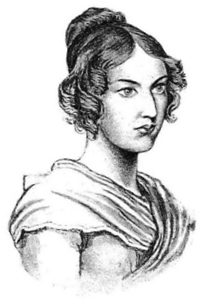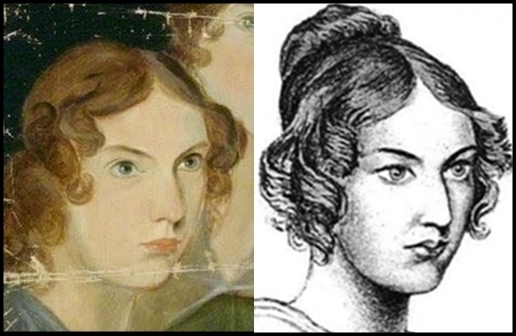|

The following year, in December 1898, the historian William Scruton
published his book 'Thornton and the Brontes' with this portrait of Emily
which was:
"carefully and accurately copied by Miss Preston from a picture which
came to me from Haworth with good credentials as to authenticity. The original was
submitted to the inspection of Martha Brown, the Brontë housekeeper, and admitted by her to
be a tolerably faithful portrait. The picture formerly belonged to a member of the
Brown family, of Haworth, who always regarded it as a good likeness. On the
strength of this evidence, and notwithstanding Mr.Shorter's opinion
that the quest for an authentic portrait of Emily Brontë now seems hopeless, I have
felt justified in giving the portrait a prominent place in my book."
This text is quite misleading:
The "picture which came to me from Haworth" was the
photo of the Pillar Portrait as published in Woman at Home the previous
year. The evidence for this is in the blemish - a dark patch - above Anne's head
in the photo. This has been mistaken by the artist for her hair and is
drawn as a bun. The blemish doesn't appear in the original portrait
painting.
"The original" was the "Photo on glass of the Pillar
Portrait" which wasn't "submitted to the inspection of Martha Brown" because
she actually owned the photo. Martha wouldn't have seen Miss Preston's portrait
as it was created in 1897-8 and Martha had died some 17 years earlier, in 1880.
The "picture [which] formerly belonged to a member of the
Brown family" was the photo, not the original portrait painting, that was with Mr
Nicholls in Ireland.
It was not known that this was the 'Pillar Portrait' described by
Elizabeth Gaskell in 1857; she identified the sisters left to right as Anne, Emily and
Charlotte.
Publication of this portrait over the past 120 years has led many
people to believe that Emily had an aquiline nose and resembled her sister, Anne.

Anne in the original 'Pillar Portrait.' Right: The illustration
of 1898.
|

